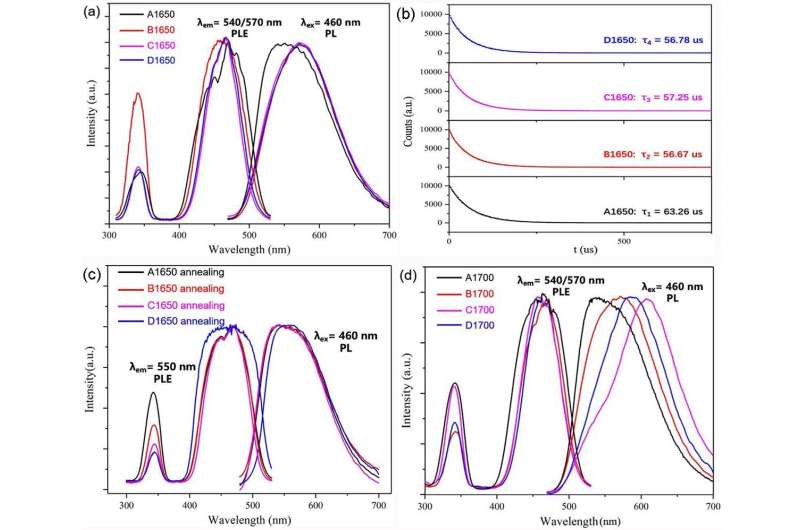Novel redshift mechanism of Ce3+ emission in Ce

As the most commonly used color phosphor in w-LEDs, Ce: Y3Al5O12 (Ce: YAG) makes an almost perfect match with blue chips to convert blue light into yellow light and obtain white light. But unfortunately, the deficiency of the red component in the mixed white light makes the light quality too poor to meet the standards of modern lighting. The redshift of Ce3+ emission in Ce: YAG is of high interest to industry and researchers.
Recently, a research team from the Shanghai Institute of Optics and Fine Mechanics of the Chinese Academy of Sciences has fabricated a new composite phosphor ceramic by introducing ZrO2 as the second phase into Ce: YAG. The result was published in Journal of the European Ceramic Society.
In their experiment, commercial Y2O3, α-Al2O3, CeO2 and ZrO2 powders were used as raw materials. The powders were weighted according to the formula and were fully mixed. After ball milling in ethanol for 24 hours, the slurry was dried at 75 degrees C and granulated with a 200-mesh sieve. After pressed into disks under uniaxial pressure of 10 MPa, the disks were processed under cold isostatic pressing at 200 MPa. The pressed disks were then heated in a muffle oven at 700 degrees C for three hours to remove the organic ingredients. Finally, the phosphor ceramic samples were obtained after sintered at the temperature of 1650 degrees C and 1700 degrees C for 12 hours, respectively.
A novel redshift mechanism of Ce3+ emission was discovered in this system, by which the emission wavelength of Ce3+ could be largely redshifted from 540 nm to 570~610 nm. This mechanism of redshift is argued to be related to the non-radiative transition of the oxygen vacancy energy level brought by the occupation of Zr3+ in the dodecahedral site.
The microstructure, luminescence properties, and the performance of ZrO2-Ce: YAG based w-LED devices were also investigated thoroughly.
This kind of redshift provides a new approach to the supplement of the red component in Ce3+ emission spectra beyond the regular methods of larger rare-earth ions doping or M2+-N4+ double substitution.
More information: Jie Chen et al. A novel redshift mechanism of Ce3+ emission in ZrO2-Ce: YAG composite phosphor ceramics, Journal of the European Ceramic Society (2020). DOI: 10.1016/j.jeurceramsoc.2020.06.026
Provided by Chinese Academy of Sciences





















